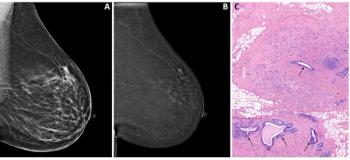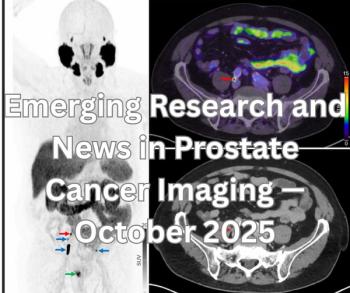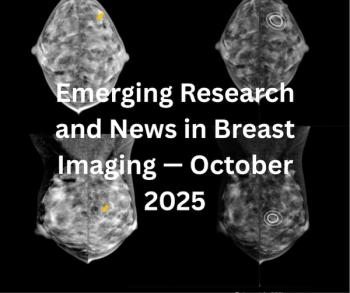
MRI Detects Breast Cancer Sooner than Mammography
Study shows using MR imaging for breast screening among women with average cancer risk improves early diagnosis.
Magnetic resonance imaging screening improves early diagnosis of breast cancer among women who are at average risk for developing breast cancer, according to a study published in
Researchers from Germany performed a prospective observational study to investigate the utility and accuracy of breast MR imaging as a supplemental screening tool in women at average risk for breast cancer, as well as the types of cancer detected with MR imaging screening.
The study included 2,120 women who underwent 3,861 screening MR imaging studies. The women, aged 40 to 70, had no breast cancer–associated risk factors. The women with least minimal residual breast and normal conventional imaging findings were invited to undergo supplemental MR imaging screening. The outcome measures were supplemental cancer detection rates, interval cancer rates, and biologic profiles of MR imaging-detected additional cancers, as well as specificity and positive predictive value (PPV) of MR imaging screening. Tissue diagnoses or two years of follow-up were used to establish the reference standard. The study covered an observation period of 7007 women-years.
The results showed that additional cancers were found when MR imaging was used:
One cancer was diagnosed with all three methods (mammography, US, and MR imaging) during the 1,741 subsequent screening rounds and none were diagnosed with mammography only or US only, the authors wrote. They added that the cancers diagnosed with MR imaging were small, median size of 8 mm, node negative in 93.4% of cases, and dedifferentiated (high-grade cancer) in 41.7% of cases at prevalence screening and 46.0% of cases at incidence screening. No interval cancers were observed. MR imaging screening offered high specificity (97.1%) and high PPV (35.7%).
According to researchers, the results suggest that MRI can serve as a useful supplemental screening tool for women at average risk, especially those with dense mammographic tissue, and MRI is superior to supplemental ultrasound for this purpose. The results also highlight the ability of MRI in the detection of more aggressive types of cancer.
“The faster a cancer grows and the better it is in seeding metastases, the better will it be picked up early by MRI,” lead author Christiane Kuhl, MD, chair of the Department of Radiology at RWTH Aachen University in Aachen, Germany, said in a release. “In our cohort, cancers found by MRI alone exhibited features of rapid growth at pathology.”
“The interval cancer rate in our study was zero percent. Not a single cancer was undetected that became palpable,” she said. “This suggests that MRI finds breast cancers that also mammography would find, but MRI detects them earlier, and it finds the cancers which, if MRI had not been done, would have progressed to interval cancers.”
Newsletter
Stay at the forefront of radiology with the Diagnostic Imaging newsletter, delivering the latest news, clinical insights, and imaging advancements for today’s radiologists.






























